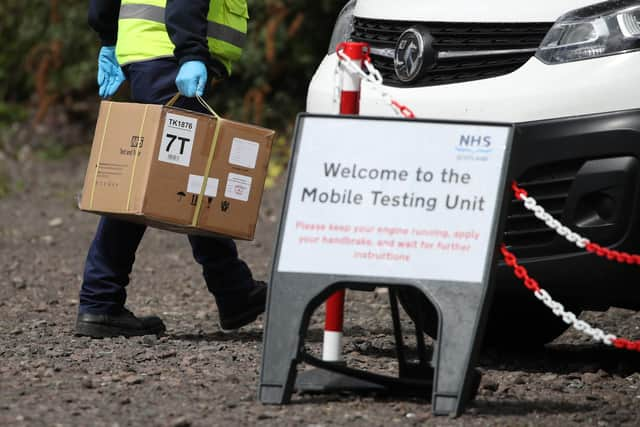Covid Scotland: Analysis of test results reveals those most at risk contracting virus
In Scotland, the risk of testing positive appeared to increase until early 40s and decreased thereafter in the analysis of data from November 11 2020 to May 16 2021 by the Office for National Statistics (ONS). In contrast, in England, younger ages were markedly more likely to test positive than those from older ages.
North of the border, non-white people were more likely to test positive if they lived in a larger household, compared to in England, where larger households were more likely to test positive, regardless of ethnicity. In Wales, there was no evidence of an association between household size and the likelihood of testing positive.
Advertisement
Hide AdAdvertisement
Hide AdMeanwhile, in both Scotland and England, living in a major urban area, urban city or town, or rural town increased the likelihood of testing positive for coronavirus, when compared to those living in rural villages.


North of the border, the study was based on results from 34,863 individuals who were participants in the ONS Coronavirus Infection Survey and was conducted mainly when the Alpha variant of coronavirus was dominant in the UK. The participants were all living in private households in the UK. Therefore, the study excludes those living in institutional settings such as hospitals and care homes.
The report said: “The effect of household size varied by ethnicity in Scotland. In England, both White and non-White individuals in larger households had a higher likelihood of testing positive. In Scotland, household size was associated with an increased likelihood of testing positive to a greater extent for non-White individuals compared with England.
"White individuals in Scotland were equally as likely to test positive regardless of household size, compared with White individuals in England.”
It added: “In Scotland, higher deprivation was associated with increased likelihood of testing positive to a greater extent for those in a multigenerational household, and to a lesser extent for non-multigenerational households, compared with England. In England, higher deprivation was associated with increased likelihood of testing positive regardless of whether an individual lives in a multigenerational household.”
A message from the Editor:
Thank you for reading this article. We're more reliant on your support than ever as the shift in consumer habits brought about by Coronavirus impacts our advertisers.
If you haven't already, please consider supporting our trusted, fact-checked journalism by taking out a digital subscription.
Comments
Want to join the conversation? Please or to comment on this article.
